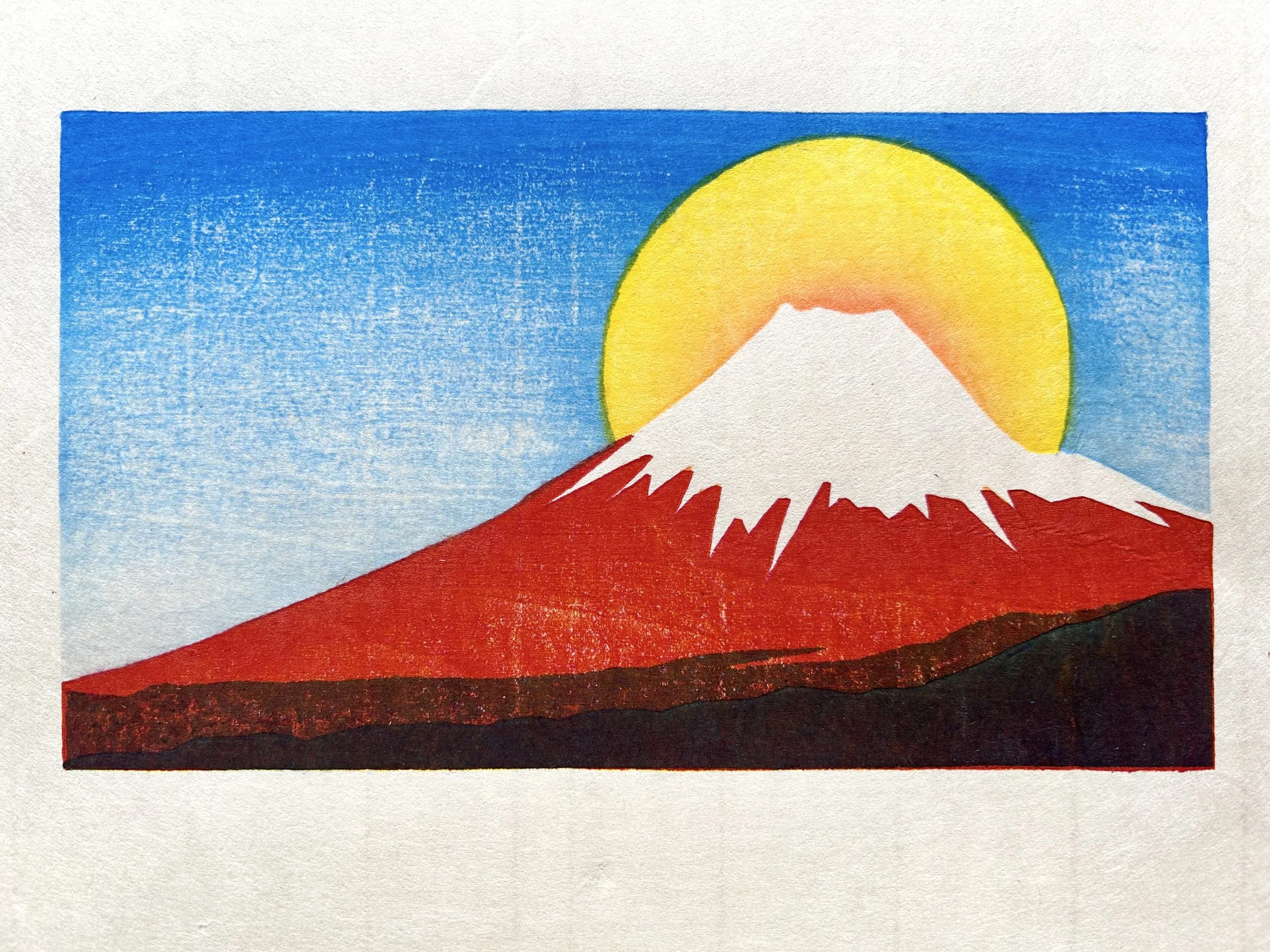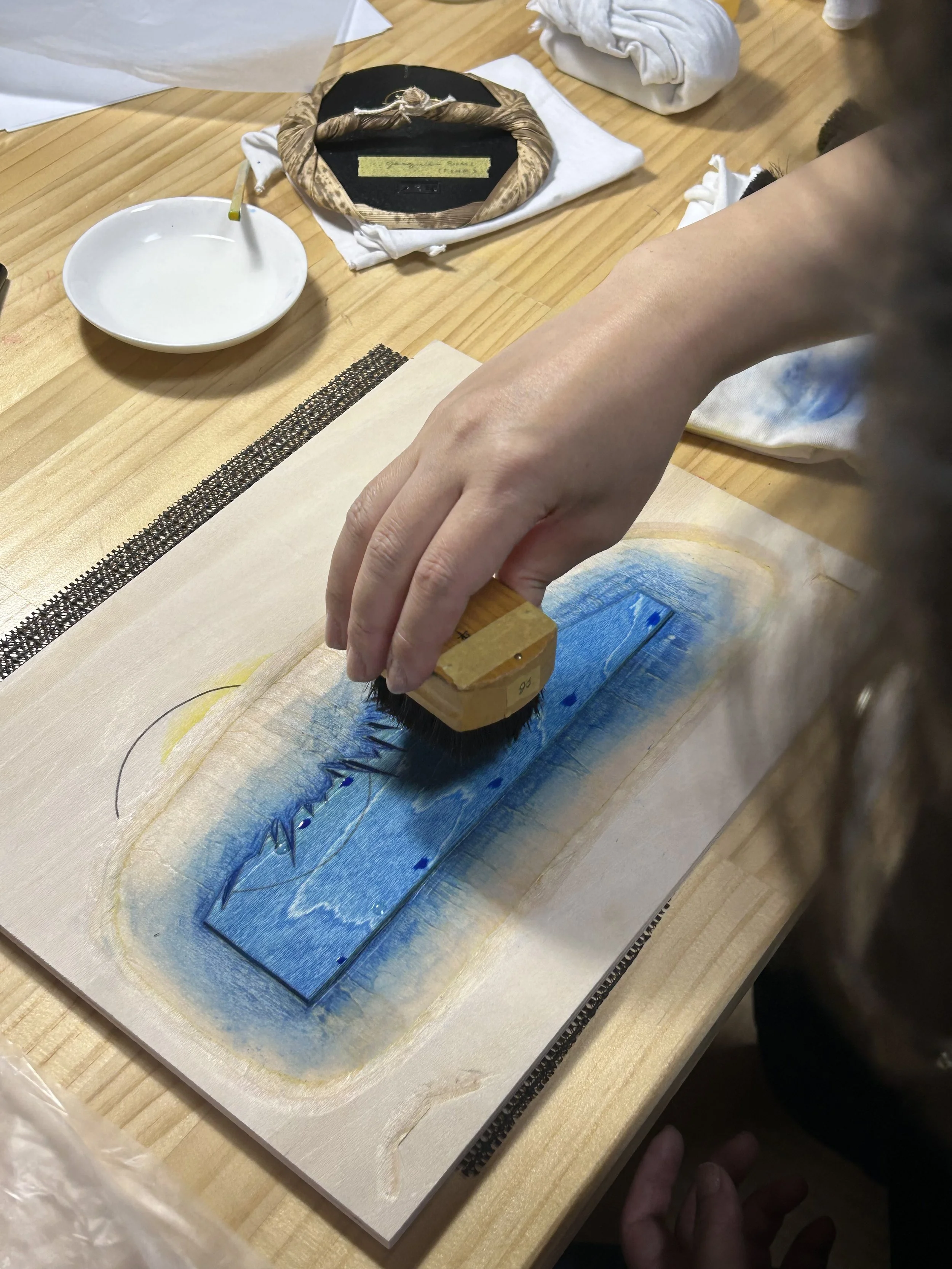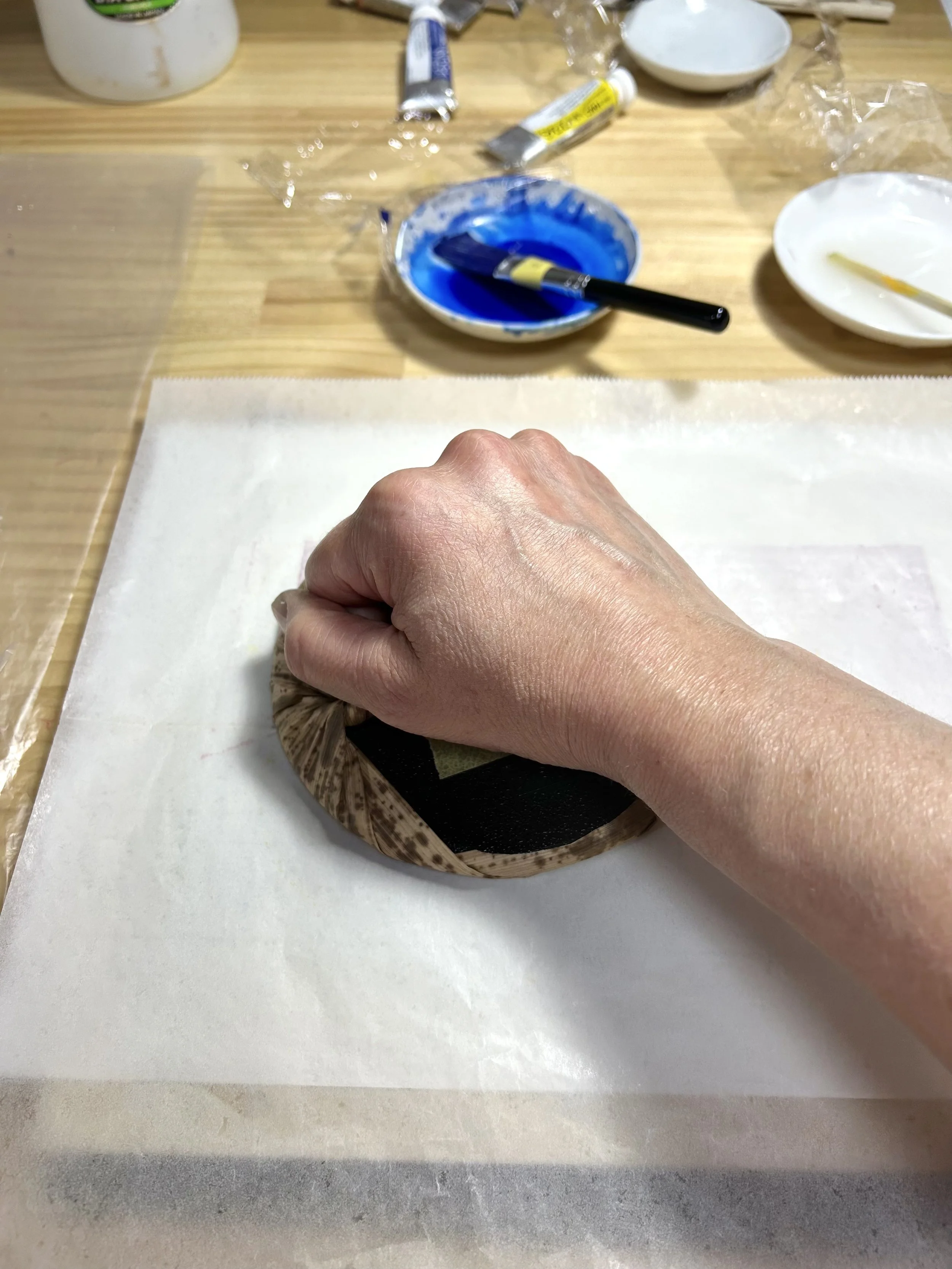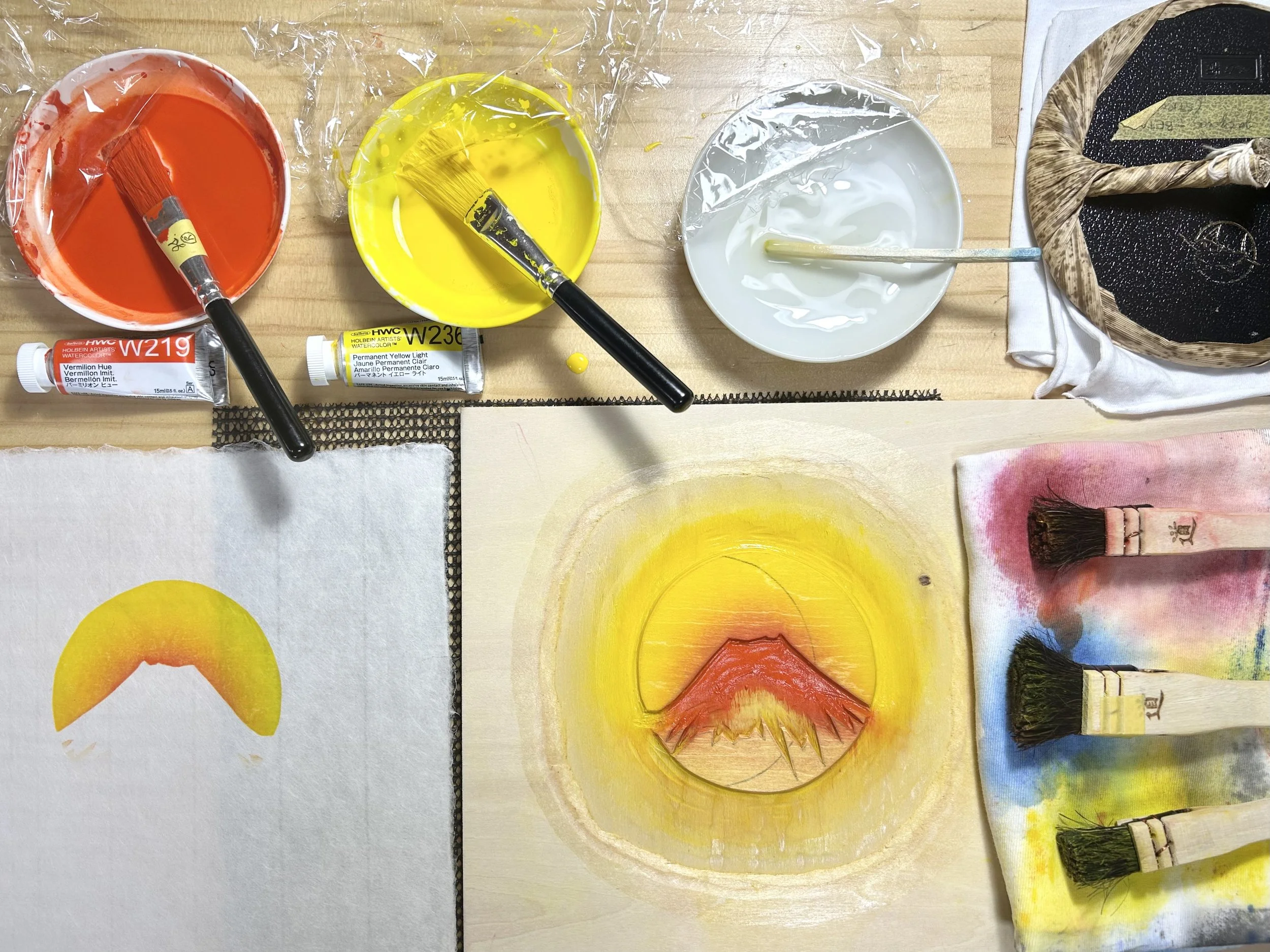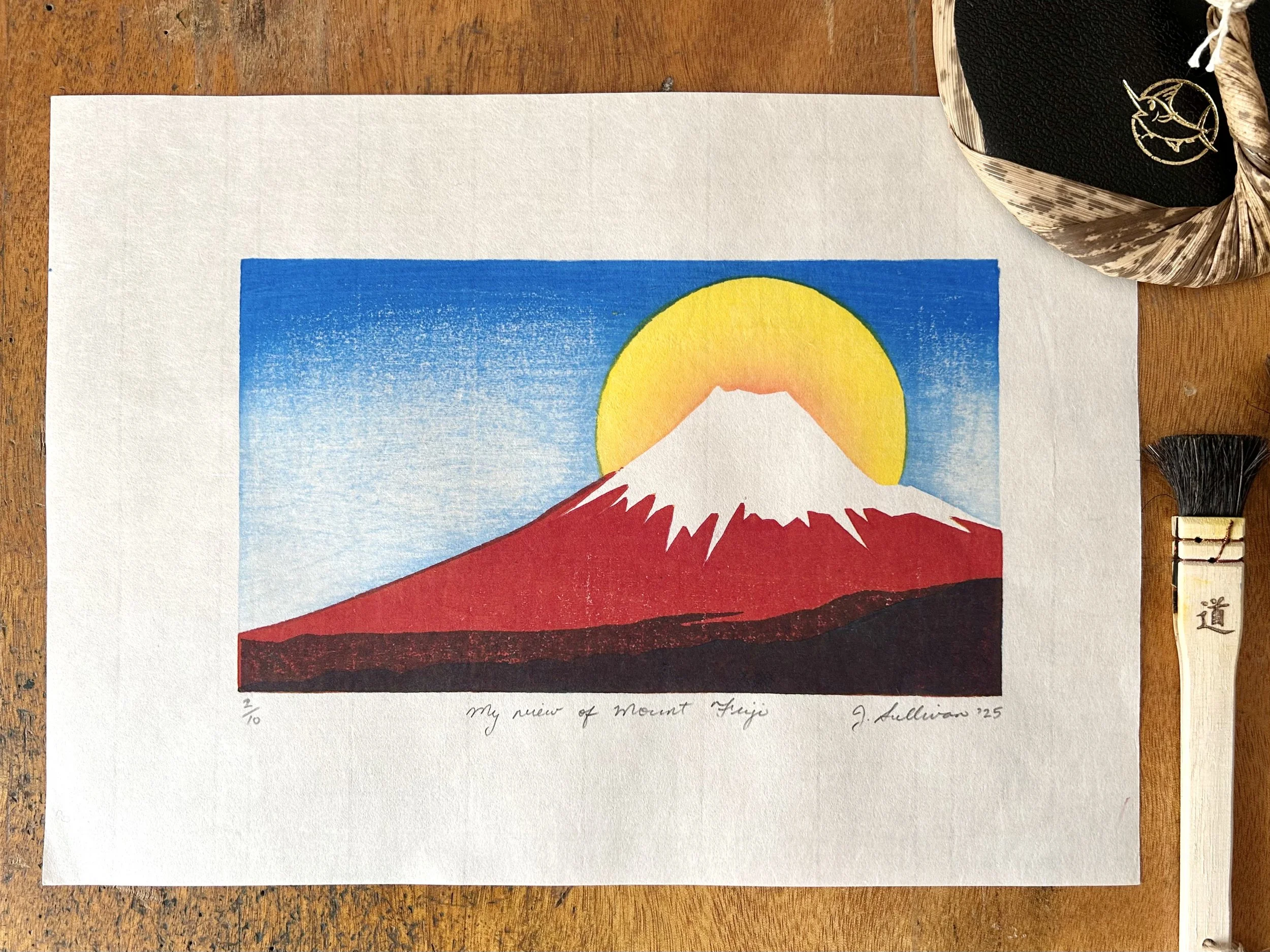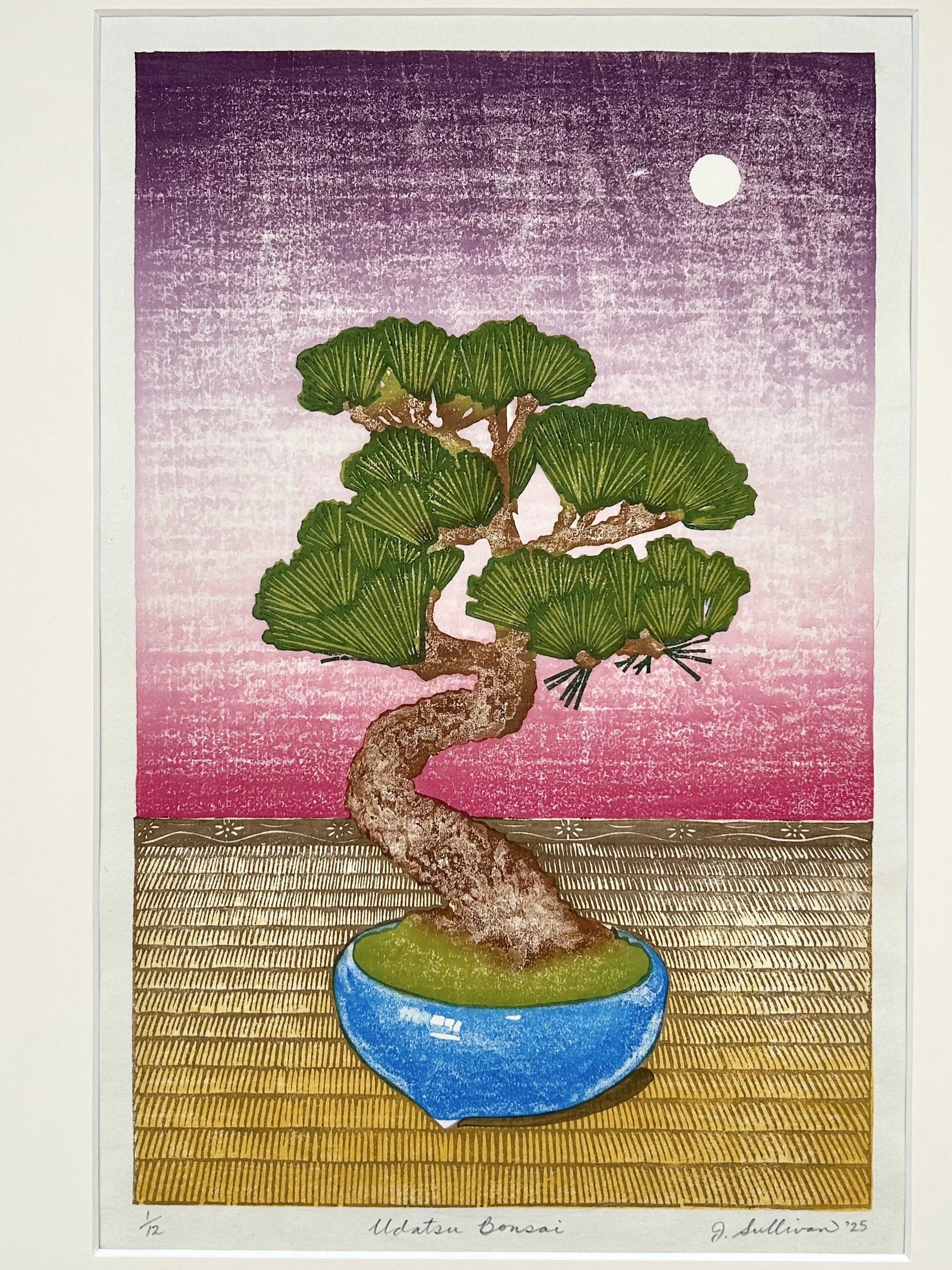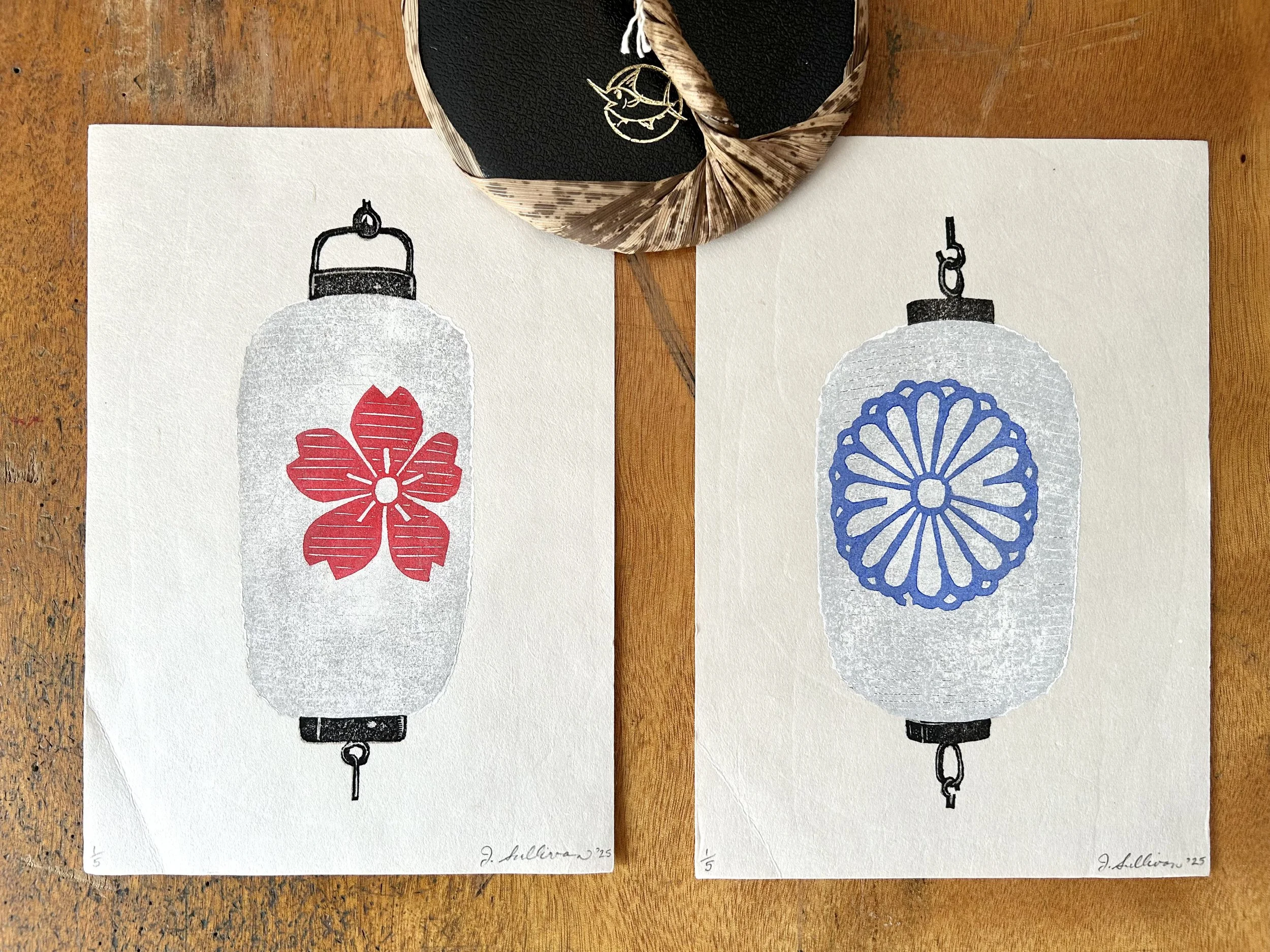What is mokuhanga?
Mokuhanga is a form of multi-colour woodblock printmaking developed in Japan in the 17th century, having evolved from earlier Chinese woodblock printing techniques. Mokuhanga prints are made by carving planks of wood, applying water-based pigments (watercolour or gouache paints) to the remaining raised surfaces using special horse-hair brushes, and then printing those pigments by hand onto damp washi (handmade Japanese paper) using a baren (circular rubbing disk covered in a bamboo leaf) to burnish the back of the paper. A separate block of wood is carved and printed for each 1-2 colours in an image, and multiple impressions of a certain colour block may be made to build up the vibrancy of that pigment. The Kento notch registration system is carved right into these boards to properly align the paper when printing each layer of a print.
This traditional Japanese woodblock printmaking technique differs from Western woodcut in its use of water-based pigments printed by hand/baren rather than an oil-based ink applied with a roller (brayer) and transferred to paper using a printing press.
While traditional ukiyo-e prints of the Edo period of Japan (17th-19th cent.) were created through the efforts of three different people – artist/designer, carver & printer – contemporary mokuhanga artists often complete all three tasks themselves, a practise that began during the Sosaku Hanga (“creative prints”) movement of the 20th century.
My view of Mount Fuji - A4 mokuhanga woodcut on Nasu Kozo made by Hiromi Yamada, Echizen, Japan (2025)
Udatsu Bonsai - A2 mokuhanga woodcut on Nasu Kozo made by Hiromi Yamada, Echizen, Japan, in a 12" x 18" mat (2025)
Chochin, Kyoto - A5 mokuhanga woodcut on Kumohadamashi washi made by Iwano Heizaburou Co. Ltd., Echizen, Japan (2025)
